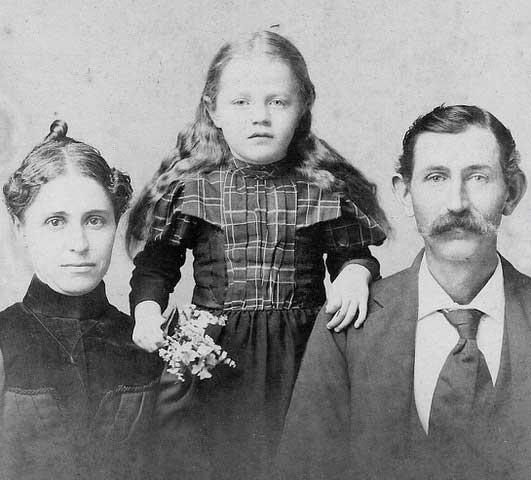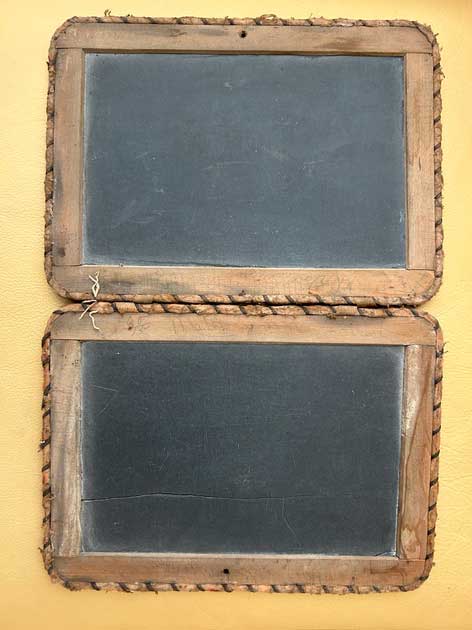May 2024
Vintage Discoveries
Old ‘slate-board’ from the 1800s made learning a bit easier
by Ken Weyand
While today’s parents and teachers fret about how youngsters are too dependent on smart phones, I was tickled to find an “education tool” from another age in the back of a closet. My mother’s name, written in a child-like scrawl, appears on one edge. it’s a good bet my slate-board set got some hard use back in its day.
My mother was born June 5, 1894, in Palmyra, IL, and lived for a time in Lincoln, MO, before the family moved to Kahoka, where her dad became an RFD Mail Carrier. By 1900, she was a student in a Kahoka elementary school, where she undoubtedly used the slate board. (Fortunately she also studied music, something she would utilize most of her life). An article in the Clark County Courier noted that she had performed a violin solo at a meeting of the local teachers’ association.)
The slate-board I found is actually two 6 x 9-inch boards, both with inch-wide wooden frames. The frames are wrapped in a thin layer of protective cotton, held in place by a thin cords. The corners of the frames are rounded, and both boards are hinged with narrow fabric straps.
Besides my mother’s name: “Mabel June Forrester,” the frame also includes a faintly stamped logo: “THE UNEXCELLED.” My online research revealed that the fabric edges on the frame “softened the noise” of the slate clattering against the edges of desk, and these slates were called “soft slates.”

Mabel Forrester (mother of the author) with her parents, Charley and Carrie, in a 1902 photo. (Image courtesy of the author)

A Soft Slate
Two slate panels were attached with narrow cloth hinges. The cloth around edge quieted the slate when it brushed against a desk, giving it the name: “soft slate.” (Image courtesy of the author)
Used to promote penmanship, a sought-after goal, the writing slate became commonly used in primary schools in the late 1800s and early 1900s. Its popularity was enhanced by the high cost of paper. Use of the slate-boards declined in the early 1900s as paper became less expensive.
My researched showed several companies producing writing slates, but no reference to “THE UNEXCELLED” could be found. Examples of the slates are offered at various internet sites, with prices ranging from $50 to $150, depending on condition.
Ken Weyand is the original owner/publisher of Discover Vintage America, founded in July 1973 under the name of Discover North.
Ken Weyand can be contacted at kweyand1@kc.rr.com Ken is self-publishing a series of non-fiction E-books. Go to www.smashwords.com and enter Ken Weyand in the search box.

